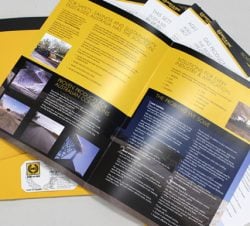If your website isn't ranking well for those profitable, long-tail keywords, you clearly need to review your SEO (Search Engine Optimisation) strategy.
Before you rush to get any off-page work done, (backlinks etc), the first place to start is right at home, ON your website.
You need to make sure that the content is up to scratch, because if it isn't, then no amount of sophisticated off-page work is going to give you the rankings you are looking for.
We often see this when people come for help with their Internet marketing.
In many cases, a lot of good work has been done, HOWEVER it is all in the realm of the web developer, without involving the expertise of a copywriter. As a result, key SEO areas are overlooked, and the website isn't ranking and producing leads.
Website content must be engaging, and talk to your reader's needs.
Google's philosophy is very clear when it comes to website design and content. The sites that are likely to rank higher for a relevant search:
- Are informative,
- Meet people's needs for solutions,
- Can be trusted and
- Offer current information.
This is perfectly understandable. They want to know that a search on Google is rewarded with useful, relevant information. It is what makes Google's world keep turning. The good news is, that by fitting the above criteria, you will have a site that is good for your customers AND good for Google. A win/win.
About keyword density...
The days of simply 'stuffing' keywords into a website are long gone. Google's analysis is very sophisticated, and will look at the context of the wording on your site, to make sure that it is likely to make sense. If you overuse your keywords, then you are likely to lose rankings as a result.
There is also the reality that, increasingly, search engines are becoming ever more human-like in their ability to extract meaning from a web page. It is no longer productive to get too caught up finessing a particular keyword into every nook and cranny.
For example, a page talking about Corollas, tyres, Avalons, Prados and engines is about Toyota. You don’t need to use the actual word ‘Toyota" at every opportunity for the search engines to figure that out.
So, if you aren't going to stuff the site full of keywords, what DO you do to ensure that your long tail, profitable keywords are seen by Google?
Here are 5 tips for keyword integration in your copy:
1. Turn your page titles into workhorses
The most important place your keywords should appear is in the title tag of the page. This is the wording right at the very top of the browser window, ABOVE the actual page content. On this particular page, it will read: Website Designer Explains Why Content Improves Your Website Ranking| Copywriter | Crockford Carlisle Persuasive Marketing Brisbane.
This contains keywords that will help the search engines to find this page when people look for that type of information.
If you use blogging software such as WordPress, your post or page title will be automatically transformed into title tags, so this will be handled for you. Remember though, your page title should carry your keywords in an interesting promise that tells the person looking on Google what the page has to offer.
2. Use your opening sentence
We’ve always found it fruitful to repeat the targeted keywords in the opening sentence, as long as it is done in a way that is appealing to a reader. In many cases, search engines use this initial copy as the description of the content, so writing this from a MARKETING perspective rather than just an SEO perspective is very important.
If you look at the opening sentence for this article, you will see that "Website isn't ranking" gets a mention, as it is one of the keywords for this article.
3. Even sub heads can influence rankings
Subheads are useful from a reader's perspective, as they break the text into bite-sized chunks. They are also something that the search engines are likely to take into consideration, to get a feel for the overall theme of your page. Again, don't go overboard, however when opportunities present themselves, subheads are a natural opportunity to include keywords, as an legitimate introduction to the next section in your copy.
4. Use related Words and Synonyms
Good, human-friendly copy will naturally result in words that are related to, as well as synonyms for, the keyword phrases you are after. It is safe to assume that search algorithms are advanced enough to look for proper contextually-related words that support your targeted keywords.
5. Be specific
Great copy (either web or print) is specific.
Don't use bland general terminology, use strong, descriptive words. The more specific you are, the less your readers have to figure out, and the less the search engines have to figure out. The flow-on is that specific copy, by default, means you are more likely to include additional, related words to support the overall value of your keywords.
Good for your rankings. Great for your readers.
I once heard an award-winning architect talking about how he likes it if his buildings fit right into their surroundings, and "don't stand out and annoy people".
A good website copywriter is the same — carefully crafting content that integrates keywords in a way that doesn’t annoy your readers.
To find out whether the keyword density of your website is well balanced, talk to us. As well as having one of our web copywriters check it over, we have advanced software that will analyse your website against those of your competitors, identifying strengths, weaknesses and opportunities for improvement to find out WHY your website isn't ranking and give you the advantage you are looking for.



















